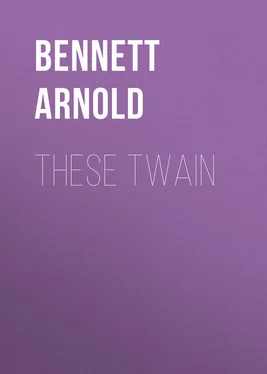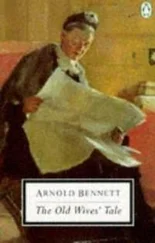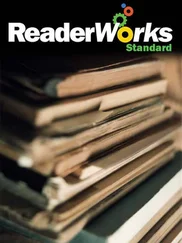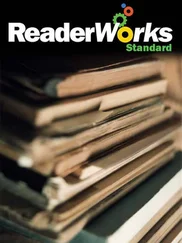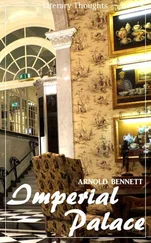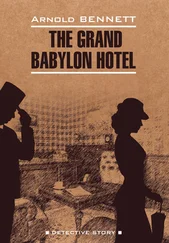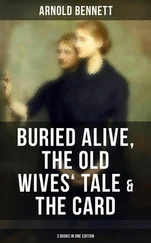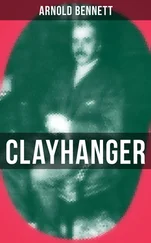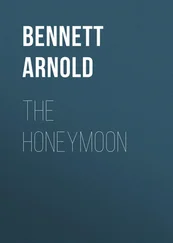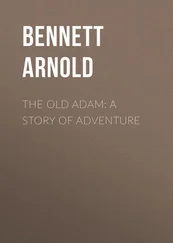Arnold Bennett - These Twain
Здесь есть возможность читать онлайн «Arnold Bennett - These Twain» — ознакомительный отрывок электронной книги совершенно бесплатно, а после прочтения отрывка купить полную версию. В некоторых случаях можно слушать аудио, скачать через торрент в формате fb2 и присутствует краткое содержание. Жанр: foreign_prose, foreign_antique, foreign_language, на английском языке. Описание произведения, (предисловие) а так же отзывы посетителей доступны на портале библиотеки ЛибКат.
- Название:These Twain
- Автор:
- Жанр:
- Год:неизвестен
- ISBN:нет данных
- Рейтинг книги:5 / 5. Голосов: 1
-
Избранное:Добавить в избранное
- Отзывы:
-
Ваша оценка:
- 100
- 1
- 2
- 3
- 4
- 5
These Twain: краткое содержание, описание и аннотация
Предлагаем к чтению аннотацию, описание, краткое содержание или предисловие (зависит от того, что написал сам автор книги «These Twain»). Если вы не нашли необходимую информацию о книге — напишите в комментариях, мы постараемся отыскать её.
These Twain — читать онлайн ознакомительный отрывок
Ниже представлен текст книги, разбитый по страницам. Система сохранения места последней прочитанной страницы, позволяет с удобством читать онлайн бесплатно книгу «These Twain», без необходимости каждый раз заново искать на чём Вы остановились. Поставьте закладку, и сможете в любой момент перейти на страницу, на которой закончили чтение.
Интервал:
Закладка:
These Twain
BOOK I
THE WOMAN IN THE HOUSE
CHAPTER I
THE HOUSE
In the year 1892 Bleakridge, residential suburb of Bursley, was still most plainly divided into old and new, – that is to say, into the dull red or dull yellow with stone facings, and the bright red with terra cotta gimcrackery. Like incompatible liquids congealed in a pot, the two components had run into each other and mingled, but never mixed.
Paramount among the old was the house of the Member of Parliament, near the top of the important mound that separates Hanbridge from Bursley. The aged and widowed Member used the house little, but he kept it up, and sometimes came into it with an unexpectedness that extremely flattered the suburb. Thus you might be reading in the morning paper that the Member had given a lunch in London on the previous day to Cabinet Ministers and ladies as splendid as the Countess of Chell, and-glancing out of the window-you might see the Member himself walking down Trafalgar Road, sad, fragile, sedately alert, with his hands behind him, or waving a gracious hand to an acquaintance. Whereupon you would announce, not apathetically: "Member's gone down to MacIlvaine's!" ('MacIlvaine's being the works in which the Member had an interest) and there would perhaps be a rush to the window. Those were the last great days of Bleakridge.
After the Member's house ranked such historic residences as those of Osmond Orgreave, the architect, (which had the largest, greenest garden and the best smoke-defying trees in Bleakridge), and Fearns, the Hanbridge lawyer; together with Manor "Cottage" (so-called, though a spacious house), where lived the mechanical genius who had revolutionised the pottery industry and strangely enough made a fortune thereby, and the dark abode of the High Church parson.
Next in importance came the three terraces, – Manor Terrace, Abbey Terrace, and the Sneyd Terrace-each consisting of three or four houses, and all on the west side of Trafalgar Road, with long back-gardens and a distant prospect of Hillport therefrom over the Manor fields. The Terraces, considered as architecture, were unbeautiful, old-fashioned, inconvenient, – perhaps paltry, as may be judged from the fact that rents ran as low as £25 a year; but they had been wondrous in their day, the pride of builders and owners and the marvel of a barbaric populace. They too had histories, which many people knew. Age had softened them and sanctioned their dignity. A gate might creak, but the harsh curves of its ironwork had been mollified by time. Moreover the property was always maintained in excellent repair by its landlords, and residents cared passionately for the appearance of the windows and the front-steps. The plenary respectability of the residents could not be impugned. They were as good as the best. For address, they would not give the number of the house in Trafalgar Road, but the name of its Terrace. Just as much as the occupiers of detached houses, they had sorted themselves out from the horde. Conservative or Liberal, they were anti-democratic, ever murmuring to themselves as they descended the front-steps in the morning and mounted them in the evening: "Most folks are nobodies, but I am somebody." And this was true.
The still smaller old houses in between the Terraces, and even the old cottages in the side streets (which all ran to the east) had a similar distinction of caste, aloofness, and tradition. The least of them was scornful of the crowd, and deeply conscious of itself as a separate individuality. When the tenant-owner of a cottage in Manor Street added a bay-window to his front-room the event seemed enormous in Manor Street, and affected even Trafalgar Road, as a notorious clean-shaven figure in the streets may disconcert a whole quarter by growing a beard. The congeries of cottage yards between Manor Street and Higginbotham Street, as visible from certain high back-bedrooms in Trafalgar Road, – a crowded higgledy-piggledy of plum-coloured walls and chimneys, blue-brick pavements, and slate roofs-well illustrated the grand Victorian epoch of the Building Society, when eighteenpence was added weekly to eighteenpence, and land haggled over by the foot, and every brick counted, in the grim, long effort to break away from the mass.
The traditionalism of Bleakridge protected even Roman Catholicism in that district of Nonconformity, where there were at least three Methodist chapels to every church and where the adjective "popish" was commonly used in preference to "papal." The little "Catholic Chapel" and the priest's house with its cross-keys at the top of the mound were as respected as any other buildings, because Roman Catholicism had always been endemic there, since the age when the entire let belonged to Cistercian monks in white robes. A feebly endemic Catholicism and a complete exemption from tithes were all that remained of the Cistercian occupation. The exemption was highly esteemed by the possessing class.
Alderman Sutton, towards the end of the seventies, first pitted the new against the old in Bleakridge. The lifelong secretary of a first-class Building Society, he was responsible for a terrace of three commodious modern residences exactly opposite the house of the Member. The Member and Osmond Orgreave might modernise their antique houses as much as they liked, – they could never match the modernity of the Alderman's Terrace, to which, by the way, he declined to give a name. He was capable of covering his drawing-room walls with papers at three-and-six a roll, and yet he capriciously preferred numbers to a name! These houses cost twelve hundred pounds each (a lot of money in the happy far-off days when good bricks were only £1 a thousand, or a farthing apiece), and imposed themselves at once upon the respect and admiration of Bleakridge. A year or two later the Clayhanger house went up at the corner of Trafalgar Road and Hulton Street, and easily outvied the Sutton houses. Geographically at the centre of the residential suburb, it represented the new movement in Bleakridge at its apogee, and indeed was never beaten by later ambitious attempts.
Such fine erections, though nearly every detail of them challenged tradition, could not disturb Bleakridge's belief in the stability of society. But simultaneously whole streets of cheap small houses (in reality, pretentious cottages) rose round about. Hulton Street was all new and cheap. Oak Street offered a row of pink cottages to Osmond Orgreave's garden gates, and there were three other similar new streets between Oak Street and the Catholic Chapel. Jerry-building was practised in Trafalgar Road itself, on a large plot in full view of the Catholic Chapel, where a speculative builder, too hurried to use a measure, "stepped out" the foundations of fifteen cottages with his own bandy legs, and when the corner of a freshly-constructed cottage fell into the street remarked that accidents would happen and had the bricks replaced. But not every cottage was jerry-built. Many, perhaps most, were of fairly honest workmanship. All were modern, and relatively spacious, and much superior in plan to the old. All had bay-windows. And yet all their bay-windows together could not produce an effect equal to one bay-window in ancient Manor Street, because they had omitted to be individual. Not one showy dwelling was unlike another, nor desired to be unlike another.
The garish new streets were tenanted by magic. On Tuesday the paperhangers might be whistling in those drawing-rooms (called parlours in Manor Street), – on Wednesday bay-windows were curtained and chimneys smoking. And just as the cottages lacked individuality, so the tenants were nobodies. At any rate no traditional person in Bleakridge knew who they were, nor where they came from, except that they came mysteriously up out of the town. (Not that there had been any shocking increase in the birthrate down there!) And no traditional person seemed to care. The strange inroad and portent ought to have puzzled and possibly to have intimidated traditional Bleakridge: but it did not. Bleakridge merely observed that "a lot of building was going on," and left the phenomenon at that. At first it was interested and flattered; then somewhat resentful and regretful. And even Edwin Clayhanger, though he counted himself among the enlightened and the truly democratic, felt hurt when quite nice houses, copying some features of his own on a small scale, and let to such people as insurance agents, began to fill up the remaining empty spaces of Trafalgar Road. He could not help thinking that the prestige of Bleakridge was being impaired.
Читать дальшеИнтервал:
Закладка:
Похожие книги на «These Twain»
Представляем Вашему вниманию похожие книги на «These Twain» списком для выбора. Мы отобрали схожую по названию и смыслу литературу в надежде предоставить читателям больше вариантов отыскать новые, интересные, ещё непрочитанные произведения.
Обсуждение, отзывы о книге «These Twain» и просто собственные мнения читателей. Оставьте ваши комментарии, напишите, что Вы думаете о произведении, его смысле или главных героях. Укажите что конкретно понравилось, а что нет, и почему Вы так считаете.
